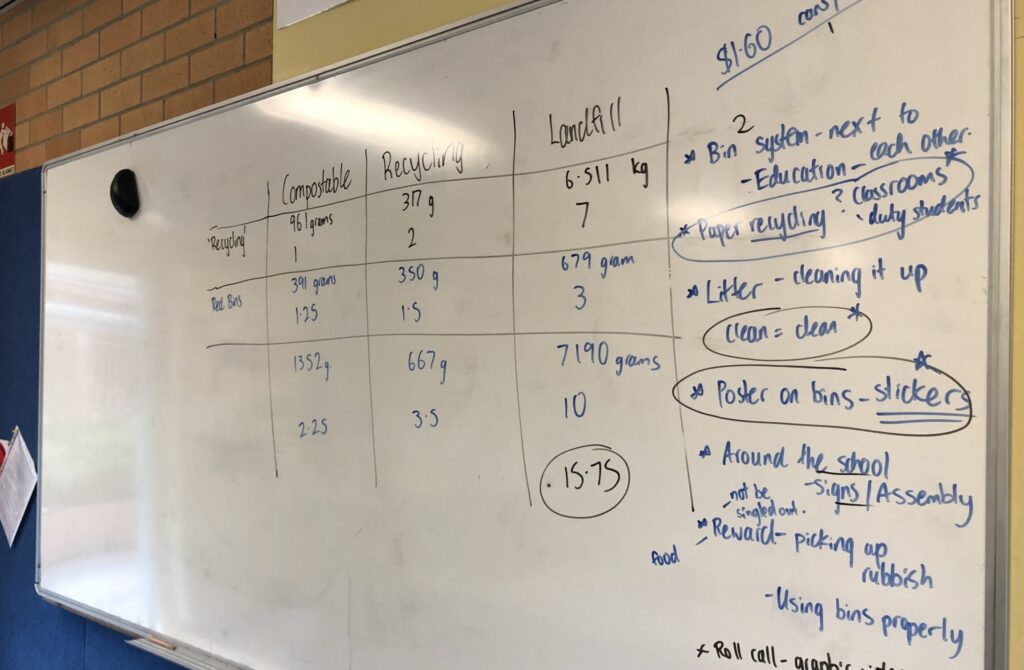Wherever your school is on its sustainability journey, have a plan.
What is a SEMP?
A School Environment Management Plan (SEMP) is a document that sets out the school community’s intentions in regard to sustainability education and environmental management. It represents an agreement to work together across the whole school.
A SEMP helps to integrate environmental considerations into whole-school planning. It helps to implement changes to school culture and everyday practices and to apply the principles of ecologically sustainable development across all school activities.
At Sustainable Schools NSW we advocate for a whole school approach to sustainability incorporating three key areas of action: campus, curriculum and culture.
Getting started
Develop a plan with a planning template (SEMP_1, SEMP_2).
Auditing tools
In order to formulate a plan, the current situation needs to be assessed. By auditing your resource use and utility costs you can keep track of your resource consumption. You can then analyse your data to find ways to save resources and create an action plan to improve your school sustainability. A range of audit tools can guide you in the monitoring process.
SEMP planning templates (SEMP_1, SEMP_2) have been developed to assist you in creating your school environmental management plan. These short templates can be adapted to your school community, branding and local priorities. If you would like a more comprehensive planning document consider these issues.
A finished plan is only useful if there is ownership and willingness by the school community to implement it. In developing the plan it is useful to consider the following:
Consult with the school community
Knowing peoples’ concerns and priorities can help guide the first steps towards a more sustainable school. Use the school council or teachers’ meetings, or student and community forums to develop a picture of the needs and wants of the school community. Get a team together to decide on how to best use this information and start your plan.
Learn more about your place
As part of the curriculum students can investigate their school or local environments. They can research how the school manages its energy, water and waste by conducting audits and they can observe changes over time in the biodiversity present in the school grounds.
Plan your action
Students and teachers can bring the research information together with the consultation and develop Action Plans. For example, your water action plan may include changes to the schools plumbing systems, water capture systems, and changing patterns of water use at school and at home. Download some action plan examples: recycling action plan, curriculum action plan, and an action plan template.
Implement: measure, record and describe
Integrating these steps into teaching programs will give students important skills across all curriculum areas. By keeping a record of your actions and the results you can communicated to the school, to parents and to the community.
Celebrate
Reflecting on the process and the outcome of each of your action plans is an important step. These celebrations will motivate your school community to take on the next challenge and engage others along the way.
Experienced sustainability educator Sue Martin offers these simple tips to make your SEMP a success.
To effectively implement sustainability initiatives into your school planning, a good team or committee to help is essential. Having a cross section of people from across the school and the local community is recommended as it provides access to a range of different skills and view points. Members in the environmental team can include:
- students
- the school Principal
- teachers
- parents
- members of your P&C association
- administration, cleaning and maintenance staff.
Resources
Building a team (DOC 112KB) is provided below to support the development of an effective environmental or sustainability team within your school.
Whole school planning promotes and supports sustainability as a key context for teaching and learning. Learning for sustainability is best delivered through a wide range of teaching and learning activities delivered across all key learning areas. By using real examples, problem solving and active student participation schools can empower students to make decisions and take actions that contribute to creating a sustainable society and ecosystem.
Sustainability is a cross curriculum priority for the Australian curriculum. Find out more about mapping sustainability across the curriculum and curriculum auditing tools.
To support teachers in their efforts to integrate sustainability within teaching and learning Sustainable Schools NSW provides links to resources grouped around the major concepts of: Energy, Water, Waste, Transport, Biodiversity and nature, Climate change and Food gardens.
A shared vision is an important element within your whole school approach to sustainability education.
Clarifying the school community vision provides a foundation that brings together your school on its sustainability journey. It can help the school community to understand the roles that are played by teachers, administrators, parents, community organisations and students, and how these partners all make contributions to the overall goal.
A good tool for developing a vision statement is a visioning exercise — involving as many members of the school community and broader community as possible. As part of a visioning exercise you could consider the following questions:
- Where are we now? (Describe the school today)
- What’s coming up? (What are the relevant emerging issues or impacts that are affecting our school, our community and the environment?)
- Where do we want to be? (What is our shared vision?)
- How are we going to get there? (What actions are we going to take? What resources do we need?)
Change educator Les Robinson provides a useful guide to brainstorming ideas.
